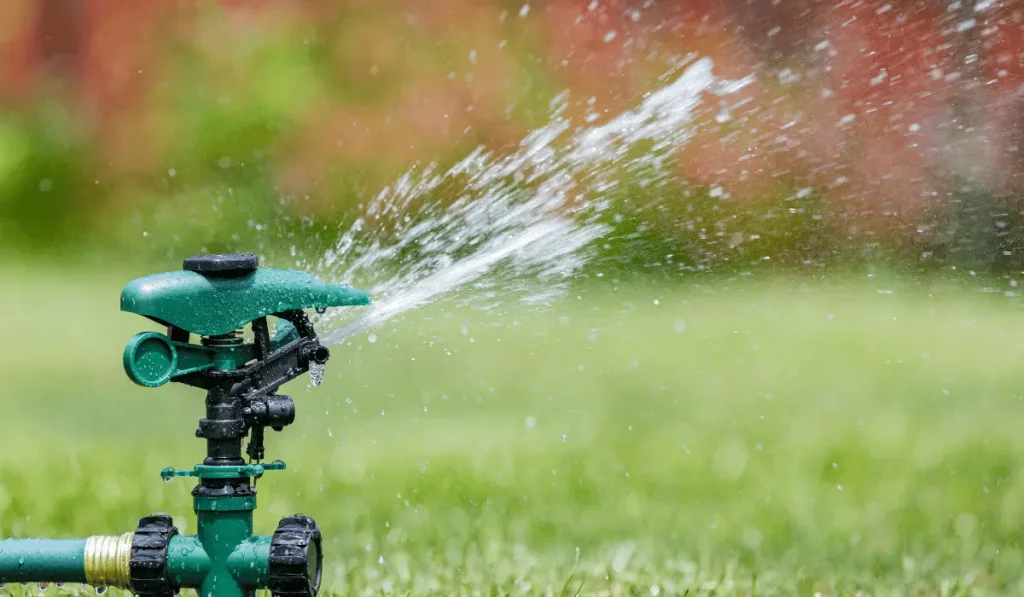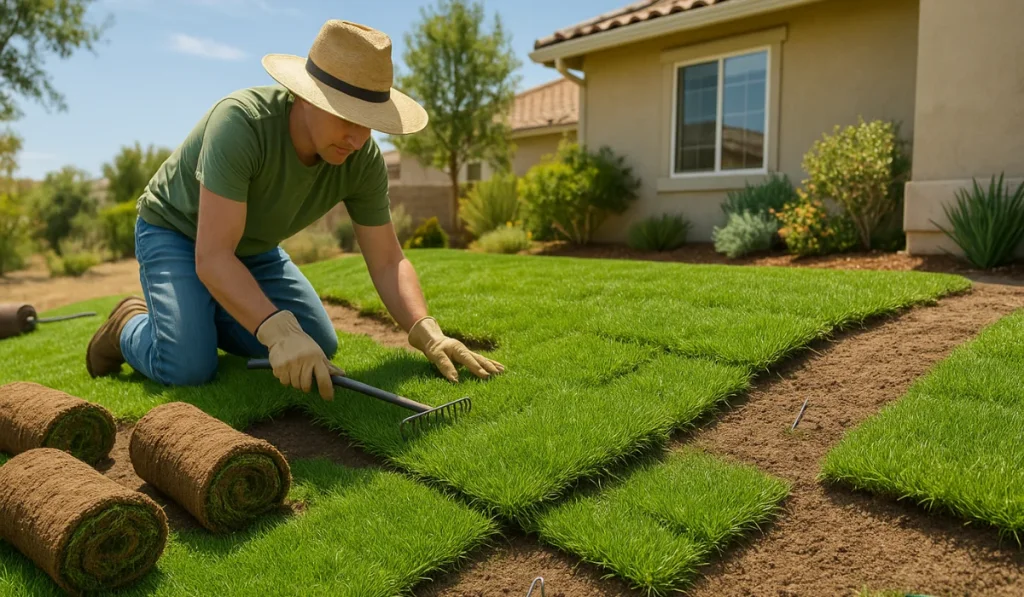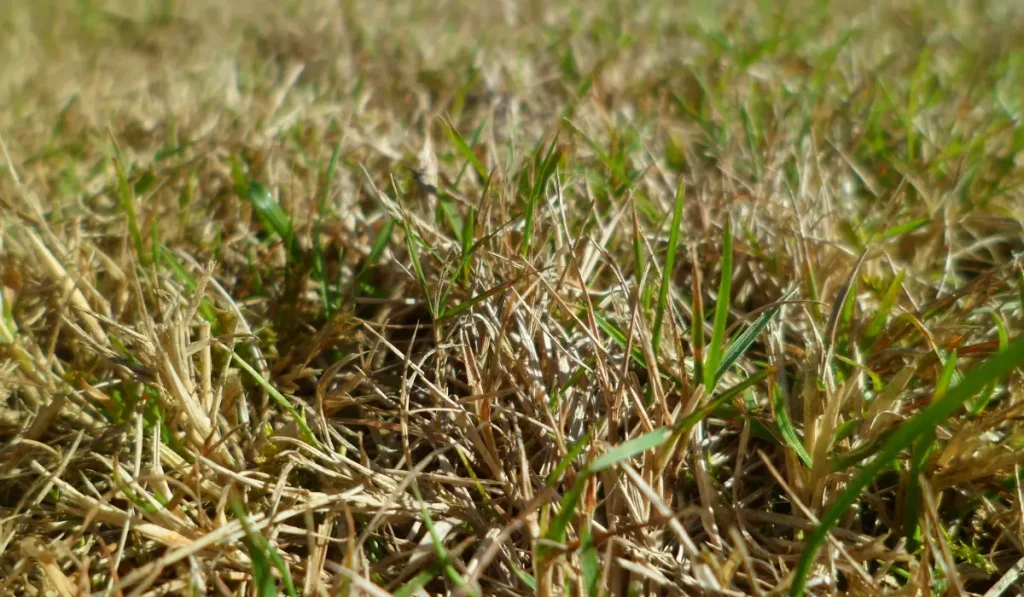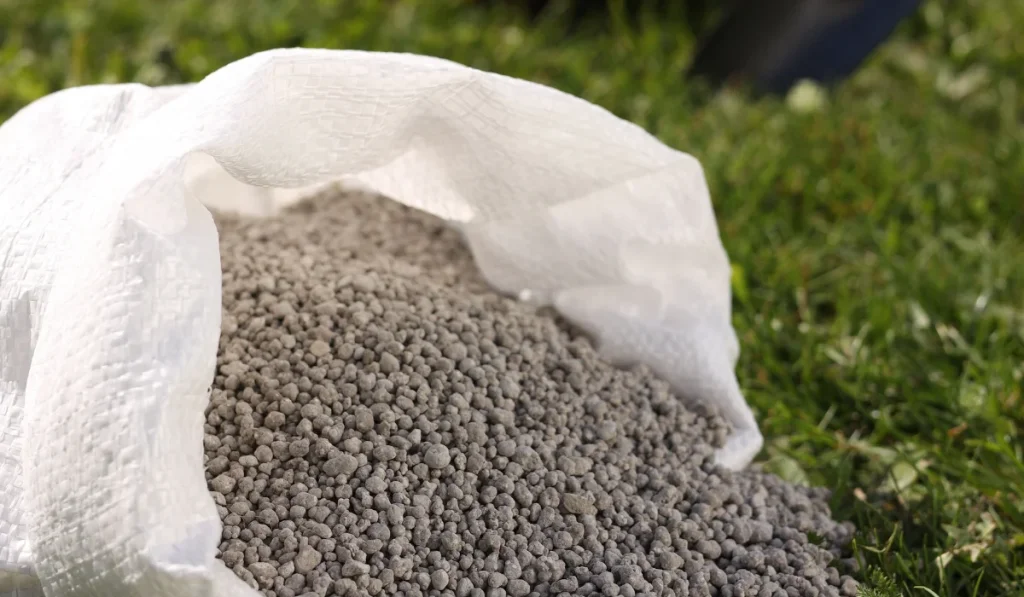Mastering your lawn care routine can be difficult, and it can be even more overwhelming to keep up with fast-growing grass. The average homeowner spends 70 hours per year caring for their lawn, and an estimated 54 million Americans mow their lawn each weekend.
If your fast-growing lawn is only adding to that demanding landscaping schedule, there are steps you can take to slow the growth and take your time and money back. Read on to learn why your grass is growing so fast and what you can do about it.
Key Takeaways
- Overwatering may cause grass to grow at an unusually fast rate.
- You might also notice a boost in your grass’s growth right after it’s been fertilized.
- Ways to deal with a fast-growing lawn include mowing taller, cutting back on feeding and watering, using chemical plant growth inhibitors, or switching to a naturally slower-growing type of grass.
Why Is Your Grass Growing So Fast?
A fast-growing lawn can be frustrating for any homeowner. Keeping up with landscaping can be difficult and can get expensive, but is crucial in maintaining your home’s first impression.
If your grass grows seemingly quicker than that of your neighbors, factors like overwatering or a boost in growth post-fertilization may be at play. Read on to learn what this means for your lawn.
Overwatering
According to SodLawn expert Amber Ayers, “If your grass is growing too fast it could be that you are overwatering. Cutting back the time when watering could help slow the growth of your grass. But be sure to not cut back too much or you could under-hydrate your lawn.”
How much you should water depends on your lawn’s type of grass.
Cool-season grasses like ryegrass, tall fescue, or Kentucky bluegrass require more frequent watering because their root systems are less extensive, and need to be watered even more in the warmer months. They should be watered overnight three times a week (in equal amounts).
Warm-season grasses like bermudagrass, zoysia, or buffalo grass require just one or two watering sessions, spaced out evenly throughout the week.
If you’re not sure which type of lawn grass you have, take note of whether it turns brown (if it does, it’s likely a warm-season grass; if it doesn’t, it’s likely a cool-season grass). Warm season grass will turn brown in the winter when soil temperatures hit 55 degrees and below.
If you live in Northern California, your lawn is likely made up of cool-season grass, while Southern California lawns likely contain warm-season grass.
However, be sure to research or consult an expert on your grass’s particular needs in terms of inches of water or minutes of sprinkling per week (based on its species, the height it’s mowed to, potential pest problems, and its exposure to sunlight).
This will ensure you meet your lawn’s needs without crossing the threshold of overwatering.
Fertilization
In addition to overwatering, Amber Ayers adds that “Fertilizing your lawn will also speed up the growth of your lawn. You may notice a boost in lawn growth shortly after it has been fertilized.”
When you should fertilize your lawn depends on factors such as the time of year and type of grass.
In general, the transition to early fall (when roots are growing), around Labor Day, is the most ideal time for fertilization, contrary to popular belief that early spring is best.
However, 55 degrees and warmer is ideal fertilization weather, which may occur at a different time of year where you live (i.e. early spring, late spring). Your grass should be fertilized about 4-5 times per year, so pay attention to whether your grass grows faster directly following those times.
Lawn fertilizer is simply meant to help grow a healthy lawn, containing minerals like nitrate, phosphorus, and potassium that your grass needs to thrive. While these nutrients are crucial to a strong, good-looking lawn, they can also cause speedy growth that can be difficult for your lawn mower routine to keep up with.
Next time you fertilize your lawn, pay attention to whether that boost in growth follows. If it does, adjust your lawn care protocol accordingly—you might need to focus on extra mowing sessions around those four or five times of year.
Tips to Deal with a Fast-Growing Lawn
If your lawn seems to be growing out of control, there are some tactics you can employ to take back the reins. Below are some of our top tips for handling grass that “grows like a weed”:
- Cut back on fertilization. If you normally fertilize five times a year, try four for the upcoming year. As long as your grass is still receiving adequate nutrients, cutting back on fertilizer is a healthy way to keep growth under control.
- Choose a low-maintenance, slow-growing grass the next time you plant grass seed. Choosing a grass with a naturally slower growth rate, like zoysia grass, fescue, or buffalo grass, can eliminate the problem at the source.
- Mow taller. By raising the setting on your lawn mower and leaving your grass blades taller, you’ll cause it to grow back more slowly (plus, taller, high-mowed grass crowds out weeds).
- Don’t encourage it. The simplest way to discourage your lawn from growing is to allow it to grow at its natural rate rather than encouraging growth with excessive feeding, watering, and fertilizers. Why invest time and money in encouraging excess growth, when you’ll just have to invest time and money on excess mowing?



